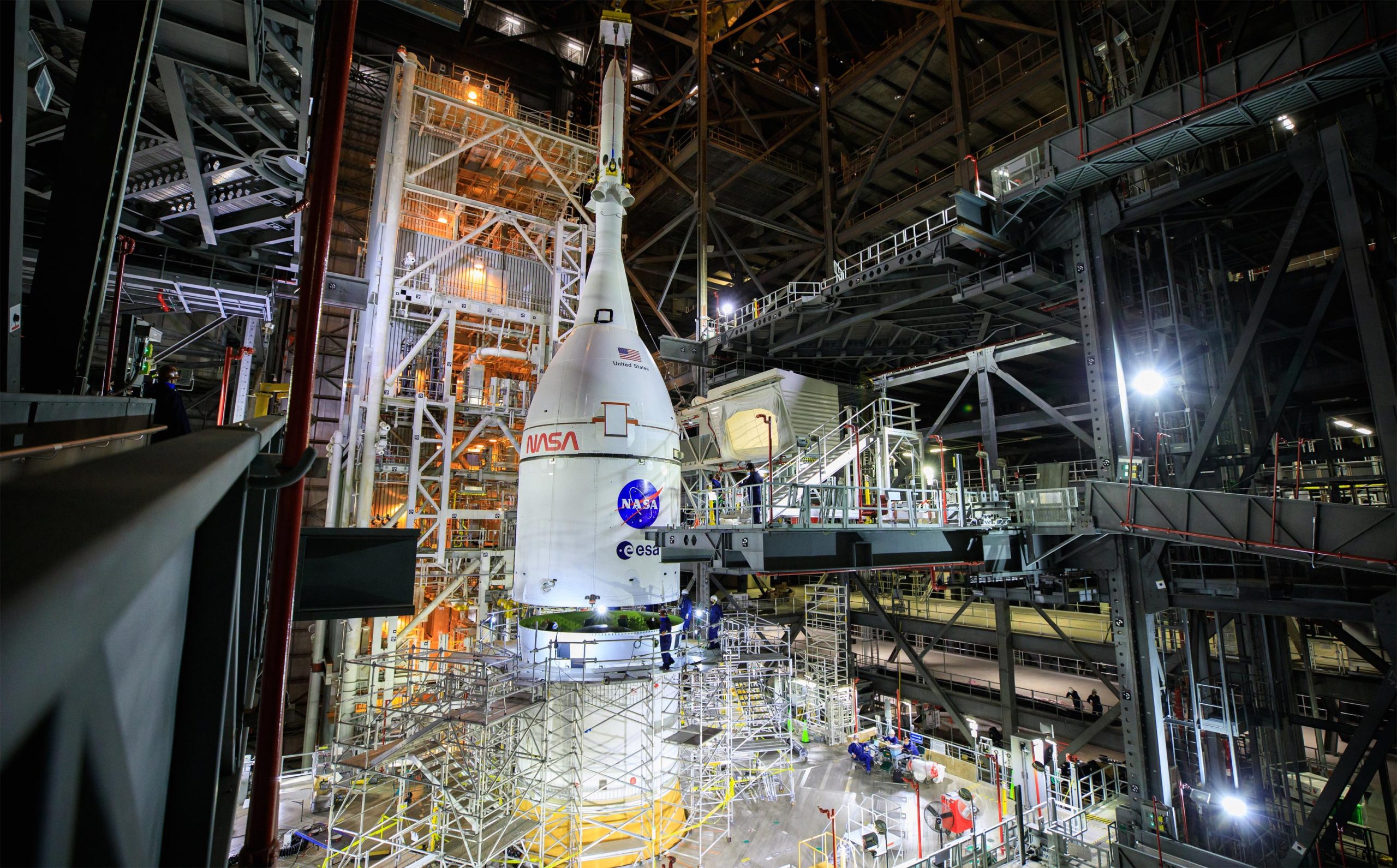
Engineers and technicians successfully secured the Orion spacecraft atop the fully assembled Space Launch System (SLS) rocket at the agency’s Kennedy Space Center in Florida just before midnight on October 21.
NASA’s Orion spacecraft is secured atop the agency’s powerful Space Launch System rocket, and the integrated system is entering the final phase of preparations for an upcoming uncrewed flight test around the Moon.With stacking complete, a series of integrated tests now sit between the mega-Moon rocket and targeted liftoff for deep space in February 2022.
Time-lapse of the stacking of the Orion spacecraft on top of the fully assembled Space Launch System (SLS) rocket at NASA’s Kennedy Space Center in Florida, on October 21, 2021, in preparation for the uncrewed Artemis I launch.
Each of the test campaigns will evaluate the rocket and spacecraft as an integrated system for the first time, building upon each other and culminating in a simulation at the pad to prepare for launch day.NASA completed stacking on October 21, 2021, of the agency’s Space Launch System rocket and Orion spacecraft for the Artemis I uncrewed mission around the Moon.A final integrated test, with all wire harnesses installed throughout the rocket and spacecraft, will verify their ability to talk to each other and to ground systems.
End-to-End Communications Testing – integrated test of radio frequencies from mission control to SLS, ICPS, and Orion – all to demonstrate our ability to communicate with the ground.This test uses a radio frequency antenna in the VAB, another near the pad that will cover the first few seconds of launch, as well as a more powerful antenna that uses the Tracking Data Relay Satellite and the Deep Space Network.
Countdown Sequencing Testing – conducts a simulated launch countdown inside the VAB to demonstrate the ground launch software and ground launch sequencer, which checks for health and status of the vehicle sitting on the pad.The teams will configure the rocket in the VAB for launch and run the sequencer to a predefined point in the countdown – testing the responses from the rocket and spacecraft and ensuring the sequencer can run without any issues.
On launch day, the ground launch sequencer hands off to the rocket and spacecraft and an automated launch sequencer takes over around 30 seconds before launch.
Wet Dress Rehearsal Testing – demonstrates the ability to load cryogenic, or supercold, propellants, including detanking the propellants with the Artemis I rocket at the launch pad on the mobile launcher.There it will undergo checkouts at the pad, and teams will practice the launch countdown and then recycle back to T-10 minutes to demonstrate the ability to scrub a launch and de-tank.
Once the systems are verified, the 322-foot-tall rocket will roll back into the VAB for final inspections and checkouts, including the second part of the flight termination system test, ahead of returning to the pad for launch.